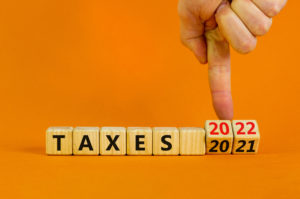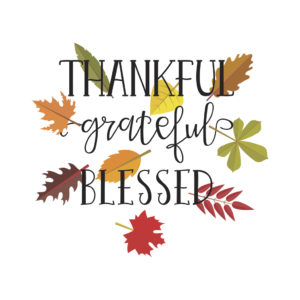2021 Business And State Sales Tax Roundup: What Were The Big Changes?
 Can you believe 2021 is almost over? Neither can we. While 2021 was somewhat calmer than the tumultuous year that was 2020, there were still plenty of important new state and business sales tax legislation and changes. While we do share updates on our blog regularly, in this article we want to provide you with an all-in-one roundup of a few important tax updates from this past year.
Can you believe 2021 is almost over? Neither can we. While 2021 was somewhat calmer than the tumultuous year that was 2020, there were still plenty of important new state and business sales tax legislation and changes. While we do share updates on our blog regularly, in this article we want to provide you with an all-in-one roundup of a few important tax updates from this past year.
Missouri And Florida Implement Economic Nexus
If you follow our blog, you know that we frequently share updates regarding economic nexus as a result of the June 2018 U.S. Supreme Court ruling in South Dakota v. Wayfair, Inc.
On April 19, 2021, Florida's governor signed S.B. 50 into law, making Florida one of the last states to adopt economic nexus for sales tax.
In June 2021, Missouri became the final state with a statewide sales tax to enact economic nexus legislation when Gov. Mike Parson signed SB 153 & 97.
How Else Has Economic Nexus Legislation Been Updated?
Several states have either reduced or removed the sales or transaction thresholds for triggering nexus in their states within the last year (or have otherwise expanded the nexus net), including Arizona, Illinois and Tennessee. It's possible that these changes in nexus helped to increase states revenue streams after losses in 2020 due to the pandemic. Even a little tweak can have significant ramifications!
SaaS Taxation Legislation Changes
We routinely share SaaS taxation updates in our weekly blog articles, as it is a fairly new topic and an issue we help many of our clients with.
In 2021, Maryland began to tax SaaS and digital products. Up until March 14, when House Bill (HB) 932 was enacted, digital products in the state were not subject to sales and use taxation.
Now, e-books, songs and movies along with SaaS are subject to these taxes.
Taxation Of Remote Workers
COVID-19 completely changed the way that we work, and for a lot of people working from home has become their new reality. As a result, the taxation of remote workers has changed in the last two years. Typically, remote workers that live in a different state than where they work can create nexus (the amount of contact from a company needed to be obligated to collect sales tax in that state).
Throughout the pandemic, however, many states have chosen not to assert nexus on the companies whose employees were working remotely due to the pandemic.
Check out our previous blog article on the subject to see some of the specific updates that happened in 2021 regarding taxation of remote workers.
Do You Need Help With Your Sales Tax Compliance?
Now is the time to get ahead with your sales tax compliance. Since state tax legislation is constantly changing, working with an experienced team of tax consultants like Miles Consulting Group is a great way to ensure you are meeting all of your sales tax obligations. If you have questions about your tax liability or any other state sales tax compliance questions, please contact us today. We're happy to clarify any multi-state tax issues you're trying to navigate.
Focus on Indiana
This month we travel to the Crossroads of America, the Midwest state of Indiana. It is known for its farmland and renowned auto race, the Indianapolis 500, held at the Indianapolis motor speedway. In the capital, Indianapolis, theatres and galleries line Massachusetts Avenue. The city’s downtown is home to the iconic Soldiers and Sailors Monument, the Canal Walk promenade and the Indianapolis Museum of Art and its wide-ranging collections.
Various indigenous peoples inhabited Indiana for thousands of years. Indiana received its name because the state was largely possessed by native tribes even after it was granted statehood. Since then, settlement patterns in Indiana have reflected regional cultural segmentation in the Eastern United States; the state’s northernmost tier was settled primarily by people from New England and New York, Central Indiana by migrants from the Mid-Atlantic states and adjacent Ohio, and Southern Indiana by settlers from the Upland South, particularly Kentucky and Tennessee.
In Northwest Indiana, there are various sand ridges and dunes, some reaching nearly 200 feet in height. These are located along the Lake Michigan shoreline and also inland to the Kankakee Outwash Plain. Southern Indiana is characterized by valleys and rugged, hilly terrain, contrasting from much of the state. Here, bedrock is exposed at the surface and isn’t buried in glacial till further north. Because of the prevalent Indiana limestone, there are numerous caves, caverns, and quarries in the area.
Business Climate
The state’s five leading exports are motor vehicles and auto parts, pharmaceutical products, industrial machinery, optical and medical equipment, and electric machinery. Northwest Indiana has been the largest steel producing center in the U.S. since 1975 and accounted for 27% of American-made steel in 2016.
Indiana is home to the International headquarters and research facilities of pharmaceutical company Eli Lilly in Indianapolis, the state’s largest corporation. Evansville is also home to the world headquarters of Mead Johnson Nutritionals. Overall, Indiana ranks fifth among all U.S. States in total sales and shipments of pharmaceutical products and second highest in the number of biopharmaceutical related jobs.
Along with corn, soybeans are also a major cash crop. Other crops include melons, tomatoes, grapes, mint, popping corn and tobacco in the southern part of the state. Most of the original land was not prairie and had to be cleared of deciduous trees. Many parcels of woodland remain and support a furniture-making sector in the southern portion of the state.
Tax Climate
The top individual income tax rate is 3.23% and the top corporate income tax rate is 5.5%.
Apportionment: Indiana taxpayers apportion income tax using a single-factor sales weighted formula.
Indiana has adopted market-based sourcing for sales of intangibles.
Sales Tax Structure
The state sales tax rate is 7%. The combined rate is also 7%.
Indiana has an economic nexus law where if an out of state seller sells $100,000 or 200 transactions worth of merchandise into the state, sellers need to collect and remit sales tax on those transactions to the state. Gross revenue from sales of tangible personal property, electronically delivered products, and services are included in the threshold. Exempt sales and exempt services are also included in the threshold. The threshold applies to transactions in the previous or current calendar year. This law went into effect on October 1, 2018.
Marketplace facilitators that make or facilitate sales into Indiana and meet the economic nexus thresholds of $100,000 in sales or 200 or more transactions in Indiana must collect and remit sales tax on all taxable sales made through the marketplace. This requirement also applies to lodging marketplaces. This law was enforced on July 1, 2019.
The sale or use of specified digital products is taxable, if the product is transferred electronically to an end user with the right of permanent use of the specified digital product and the right of permanent use is not conditioned upon continued payment. Indiana imposes sales tax on the sales of prewritten software delivered electronically. Sales of custom computer software delivered electronically are not subject to sales and use tax. Software as a service (SaaS) is not taxable in Indiana. How products are produced, sold and delivered is critical to determining the tax status.
Many states have annual sales tax holidays, during which certain items the state wants to promote the purchase of (like school supplies emergency preparedness supplies, or energy efficient appliances) can be purchased sales tax free. Indiana, however, does not currently have any scheduled sales tax holidays.
Our team at Miles Consulting Group is always available to discuss the specifics of your situation, whether in Indiana or other U.S. States, and help you navigate the complex tax structures arising from multistate operations. Call us to help you achieve the best tax efficiencies.
Random Facts
- The first long-distance auto race in the U.S. was held on May 30, 1911 at the Indianapolis Motor Speedway.
- Explorers Lewis and Clark set out from Fort Vincennes on their exploration of the Northwest Territory.
- Marcella Gruelle of Indianapolis created the Raggedy Ann doll in 1914.
- Indiana ships over 70 million tons of cargo by water each year, which ranks 14th among all U.S. states.
- In 1862, Richard Gatling, of Indianapolis, invented the rapid-fire machine gun.
- At one time, 12 different stagecoach lines ran through Indiana on the National Road (now U.S. Interstate 40).
- Indiana is the first state to have a chapel in its state capitol. It was built in memory of former first lady Beth Bowen.
- There have been six men from Indiana who have been elected vice president: Schuyler Colfax, Thomas A. Hendricks, Charles W. Fairbanks, Thomas Marshall, Dan Quayle and Mike Pence. They have earned Indiana the nickname “Mother of Vice Presidents.”
- The Indiana Dunes region on the shore to Lake Michigan provides habitats for many unusual plants, including prickly pear cactus, lichen mosses, bearberry and more than 20 varieties of orchids. Mount Baldy, the largest of the sand dunes, is a living dune that moves away from shore a few feet a year.
Axe The Food Tax: Eliminating Sales Tax On Groceries In Kansas
 Kansas Gov. Laura Kelly announced in November her plans to introduce a bill to the Kansas legislature to "Axe the Food Tax" and completely eliminate sales tax on groceries in the state. Her plan is for the bill to be introduced during the 2022 legislative session.
Kansas Gov. Laura Kelly announced in November her plans to introduce a bill to the Kansas legislature to "Axe the Food Tax" and completely eliminate sales tax on groceries in the state. Her plan is for the bill to be introduced during the 2022 legislative session.
Kansas is currently one of just seven states in the U.S. that fully taxes groceries. The current grocery sales tax rate is 6.5%, the second highest in the nation.
Keep reading to learn more about why the governor wants to axe the food tax and what this will look like for Kansas citizens.
The Negative Side Effects Of Grocery Sales Tax
While a grocery sales tax can lead to economic growth and more money for the state government, there can be negative effects for the citizens, specifically those in lower economic classes.
Sales tax on groceries can cause harm to citizens in the lowest income bracket since they usually spend more of their income on groceries to eat at home than higher income individuals and families.
According to an article from the Center on Budget and Policy Priorities, "The lowest-income fifth of families spend almost twice the share of their annual income on food at home that the highest-income fifth do: 10.3 percent versus 5.7 percent."
A study titled, "Putting grocery food taxes on the table: Evidence for food security policy-makers" found that states with a grocery tax tended to have a higher food insecurity rate.
While 10.9% of Americans are food insecure, 12.1% of Kansans are food insecure. The rate among Kansas children is 17.1%, while the national average is 14.6%.
Another study published in the Health Economic Review highlights the relationship between grocery sales tax and obesity, specifically throughout the pandemic. They estimate that the increased financial burden of obesity and diabetes rates resulting directly from grocery taxes is about $5.9 billion.
Also, though it may seem like getting rid of the grocery sales tax would lead to less money for the state, many people who live near the border in Kansas currently cross over to Missouri, Colorado or Nebraska to buy their groceries to avoid Kansas' high grocery tax, leading to less money being spent in the state. The new "Axe the Food Tax" legislation will help put an end to that, resulting in higher sales for companies that sell food in Kansas.
Kansas Governor's Plan For The State
Due to the negative aspects of a grocery sales tax, Gov. Kelly has stated she wants to completely remove the tax on foods in Kansas. With this cut the average four-person Kansas household should be able to save $500 or more a year.
Kansas lawmakers from both parties welcomed new revenue forecasts that project a $2.89 billion surplus to the state general fund as evidence the state can afford to exempt groceries from the state sales tax.
Gov. Kelly agreed that removing grocery sales tax shouldn't have too much of an effect on the state's budget.
"Thanks to the fiscally responsible decisions we made before and during the pandemic, we can cut the food sales tax and keep Kansas' budget intact."
Do You Need Help With Your Sales Tax Compliance?
If you have questions about your tax liability or any other state sales tax compliance questions, please contact us today. We're happy to clarify any multi-state tax issues you're trying to navigate.
The M&A Ballet as Related to Employment Tax
Thank you to our guest blogger, Peter Del Monaco, for his second installment about employment tax matters – this time related to a merger/acquisition transaction. Click here for Peter’s previous article.
Employment Tax Refunds, Mergers & Acquisitions
The occurrence of a merger, acquisition or divestiture can significantly impact a company’s employment tax liabilities and affects many within an organization. Favorable employment tax attributes of an acquired or merged entity often may be preserved, and refund opportunities may exist as a result of prior mergers, acquisitions, and/or divestitures. However, many employers often overlook these issues for a host of reasons - registration at the state and local level, ensuring that the new employees receive their paychecks in a timely fashion and that their benefits are accurately carried forward.
Happy Thanksgiving!
With the holiday season officially kicking off, we’d like to take a minute to stop and reflect on the many things we’re thankful for – both business and personal as we head into a long weekend with loved ones.
Thank you, Clients! Whether you’ve been a client for ten years, ten months or ten days – we appreciate the trust you’ve placed in us to consult with you on your state tax needs. We enjoy the collaboration on your important transactional tax matters and always endeavor to get you to the best answer for your situation. And hope that we all enjoy the process (What? Enjoy sales tax?) as we work together to get there. It’s the best of all worlds when your client also becomes a friend!
Thank you, Miles Consulting Team! It’s a wonderful thing to have a team of smart, energetic and fun people to work with every day. Behind every successful project delivered to our valuable clients is a team of dedicated people making it happen. As a firm owner and founder of this company, I know I speak for my partner, Bill, as well when I say that we couldn’t be prouder of the group we have been lucky enough to pull together and keep together. Our firm will celebrate 20 years in business early next year…a little Silicon Valley success story.
Are You A Marketplace Facilitator? Important Things You Need To Know
As the preference for online shopping continues to expand, many states have passed marketplace facilitation legislation. Since legislation does vary state to state, it is important to be prepared and understand your tax obligations as a marketplace facilitator. In this article we will break down areas that our marketplace facilitator clients have difficulties with and how we are able to help them. But first, let's start with the basics. How do you know if your organization is a marketplace facilitator (or "MPF")?
What Is A Marketplace Facilitator?
The first step to determine if you are a marketplace facilitator is to have a clear understanding of what a marketplace facilitator is.
As explained by TaxJar, a marketplace facilitator is a business that contracts with a third party (a "marketplace seller" or "MPS") to sell goods or services on its platform. Amazon and Etsy are two examples of well-known marketplace facilitators. Marketplace facilitation tax compliance can get tricky because sales tax obligations for MPFs vary by state. Avalara shares a helpful guide to marketplace facilitator legislation to help you get to know the basics. In its easiest definition, an MPF brings together buyers and sellers on its own platform, but does not generally take title to the inventory being sold.
We include here some definitions from California's marketplace facilitator statutes, to show the technical aspects of the law. Many states have similar criteria to California's.
- Effective Oct. 1, 2019, marketplace facilitators are considered the seller and retailer for each sale they facilitate through their marketplace and must register and collect sales tax.
- Marketplace facilitators are required to register and collect tax if they actively sell tangible personal property in the state, are a retailer engaged in business in the state, or have an economic nexus with California. In determining whether the marketplace facilitator has sufficient nexus with California, the facilitator must include both sales it facilitates and sales made on its own behalf. (Note that nexus creation is important - it can be created by physical presence or economic nexus. For economic nexus purposes, CA requires a marketplace facilitator to make sales of $500,000 or more in a calendar year before triggering the filing requirement. But that includes all sales made to CA through the marketplace.)
- A marketplace is a physical or electronic place (such as a store, booth, website, catalog, television or radio broadcast, or dedicated sales software application) where marketplace sellers offer for sale tangible personal property, regardless of whether the property, seller, or marketplace has a physical presence in California.
- A marketplace facilitator is a person who contracts with marketplace sellers to facilitate, for consideration, the sale of the seller's products through a marketplace operated by the person or related persons, and:
-
- directly or through one or more related persons: transmits the offer from the buyer to the seller; owns the infrastructure that brings buyers and sellers together; provides a virtual currency that buyers can or must use to purchase items from sellers; or certain software development or research and development activities related to its marketplace; and
- with respect to the seller's products: engages in payment processing, fulfillment or storage services; lists products for sale; sets prices; brands sales as those of the facilitator; takes orders; or provides customer service or accepts or assists with returns or exchanges.
The above definitions are important because they show how easily a company can fall into the marketplace facilitator role, simply by meeting just a few simple rules including providing the platform, facilitating the exchange of payment and providing customer service - which most such platforms do!
Real Client Examples
To bring some color to the marketplace facilitator story, here are some of the situations in which we've recently helped our clients regarding marketplace facilitation:
- A company provides a platform to match people requiring specific services with those who can provide the service, and needs assistance because some of the services provided through their platform are subject to sales tax, varying state by state.
- A platform that finds purchasers for gently used clothing needs assistance because clothing is generally taxable, but there are some exemptions.
- A company that matches sellers and buyers of specific manufacturing materials needs help because many of the sales on their website are not only through marketplace facilitators, but are also for resale.
- A company that provides a platform for people who have specialty equipment to lease needs assistance in determining the taxability of lease transactions across the states.
The challenge in all of these situations, is not just the structure of the sale or the nature of the product or service sold - it's that online marketplaces are by their nature multi-state and require even relatively small companies to be familiar with the laws of all the states. This is where we can help!
What Are Your Next Steps?
Once you determine whether or not your company is an MPF, what are your recommended next steps?
- Review state economic nexus rules to determine whether the threshold has been met (and when). Many states have a sales threshold of just $100,000.
- If nexus has been created, consider any prior exposure and quantify it.
- Determine a path for remediation of prior liabilities.
- Determine a plan forward for accurately collecting and remitting sales tax on sales made through the marketplace.
Do You Need Help With Your Marketplace Facilitation Tax Compliance?
If you find yourself in a similar situation, wonder how to tackle the "next steps" above, or have other marketplace facilitator questions, give us a call! We recommend that people new to marketplace facilitation legislation connect with professionals like Miles Consulting Group to make sure they are compliant with the MPF legislation in their state. We would be happy to help you and clarify any tax issues you are trying to navigate. Contact us today.
Focus on Louisiana
We travel south this month to Louisiana, the Pelican State. It is the 19th smallest by area and the 25th most populous of the 50 states. Louisiana is known for its soulful music, amazing food and rich heritage. The state’s multicultural background comes together in the form of festivities and lively interactions with the locals. Its annual Mardi Gras festivities and extravagant floats bring visitors from all over the world.
Much of the state’s lands were formed from sediment washed down the Mississippi River, leaving enormous deltas and vast areas of coastal marsh and swamp. These contain a rich southern biota; typical examples include birds such as ibises and egrets. There are also many species of tree frogs, and fish such as the sturgeon and paddlefish. In more elevated areas, there are extensive areas of longleaf pine forest and wet savannas. These support an exceptionally large number of plant species, including many species of terrestrial orchids and carnivorous plants.
What You Need To Know About Holiday Shopping And Online Sales Tax
 Holiday shopping can be a time of mixed emotions for retailers. While they may be grateful for the increased sales the season brings, more purchases mean more sales tax responsibilities for them to worry about.
Holiday shopping can be a time of mixed emotions for retailers. While they may be grateful for the increased sales the season brings, more purchases mean more sales tax responsibilities for them to worry about.
It has been over three years since the Wayfair online sales tax decision, and all states with a general sales tax have implemented some sort of economic nexus law. If they're not prepared, retailers, especially those without a dedicated accounting department, can be caught off guard by the additional online sales tax responsibilities days like Cyber Monday can bring.
Keep reading to learn more about how Wayfair laws affect Cyber Monday and the negative side effects online holiday shopping can have on small retailers.
Cyber Monday And Wayfair Laws
Now that all states with general sales tax legislation have enacted online sales tax laws as of earlier this year, there is concern that the increased tax burden may outweigh the benefits of increased online sales.
According to Adobe, Cyber Monday 2020 was the biggest online shopping day in U.S. history, with customers spending 10.8 billion dollars online. As the ongoing COVID-19 pandemic has seen many customers continuing to prefer online shopping, 2021 is expected to exceed these numbers.
So, what new tax responsibilities does this increased revenue bring to small companies?
The Impact Of Holiday Shopping On Small Retailers
With small businesses already dealing with the combination of extra tax liabilities resulting from the COVID-19 pandemic and Wayfair legislation, they may be overwhelmed even when it is not a busy holiday season. According to a recent study, 98 percent of accountants who responded believe that small businesses are not meeting all of the online sales tax laws they are liable for. At Miles Consulting Group, we are contacted every day by either middle market companies or smaller retailers who are not in full compliance with the responsibilities in each state.
A December 2020 study found that just 42 percent of small business owners felt they were completely compliant with Wayfair laws.
Small businesses may find themselves reaching nexus in states where they haven't before. As a result, they will now need to register to collect and remit sales tax in those states. In this case, being prepared ahead of time is crucial. If you are close to reaching nexus in a certain state before the holiday season officially begins, it may be beneficial to apply for a sales tax permit. Staying prepared and up to date is key to ensuring tax compliance. If you are a small business who needs extra help, consider reaching out to us at Miles Consulting Group.
Do You Need Help With Your Online Sales Tax Compliance?
If you have questions about your tax liability from online sales or have any other state sales tax compliance questions, please contact us today. We're happy to clarify any multi-state tax issues you're trying to navigate.
Guest Blog: Independent Contractors v. Employee Classification- Truth or Consequences
Thank you to Peter Del Monaco for this month’s guest blog. Companies sometimes contact us at Miles Consulting about multistate payroll related matters, and we then refer many of those requests to Peter, who specializes in such things!
Many employers, especially those small and midsized, are economically and professionally negatively impacted after undergoing a worker classification audit - federal or state. They are caught off guard and some have difficulty ever recovering from the financial impact. Independent contractor and/or worker classification audit defense is an area I spend much of my professional time and want to share with you what I have learned (“the truth”) over the years in order for you to perhaps eliminate (“ the consequences”) from a worker classification audit.
Happy Halloween! Are Popular Treats Affected By Sales Tax?
 Halloween is just around the corner and while this year's celebrations are likely to be more subdued than usual, it's still a fabulous excuse to buy a few bags of candy, put on a scary movie and enjoy the spooky atmosphere. But what you might not know is that the amount you pay in sales tax for your Halloween treats (if you do at all) will depend on where you live.
Halloween is just around the corner and while this year's celebrations are likely to be more subdued than usual, it's still a fabulous excuse to buy a few bags of candy, put on a scary movie and enjoy the spooky atmosphere. But what you might not know is that the amount you pay in sales tax for your Halloween treats (if you do at all) will depend on where you live.
Because states set their own regulations regarding sales tax, including what it's applied to and for how much, a bag of candy bought in one state may have a wildly different tax rate than it would in another state.
Keep reading to learn more about how sales tax on candy, and taxes on food in general, vary from state to state.
The Complexity Of Taxes On Food
Before we can get into the specific application of sales tax on candy, let's first talk about how taxes on food work in general.
Like many things, the taxation of food is complex. There are a variety of factors that influence its taxation.
To name just a few, these factors include:
- If food is considered a "necessity."
- If the item is considered "prepared food."
- If the item is sold hot or cold.
- Where the item is purchased from (e.g., a grocery store or a restaurant).
- If it's bought in person or online.
- If the food will be consumed in the location it was purchased from.
- The ingredients in the food.
When determining if a food item is taxable, the first question is whether food is taxed at a state level in that state at all? Some states consider food items a "necessity" and, in general, do not tax them, like Washington, Arizona and Wyoming. That said, even these states will have exemptions to this general rule and as a result, some food is still taxed.
For example, in Washington, "prepared food," "soft drinks" and "dietary supplements" are all subject to sales tax.
Other states do generally apply sales tax to food items, such as Alabama, Arkansas and Idaho. However, states that generally tax food may also make exemptions and not apply tax to certain items.
Another thing that may impact the taxability of the food you're purchasing (or selling) is where and how the food is being purchased. Some states that don't tax food in general will add tax if it's prepared by a restaurant or if it's bought from a grocery store or other retailer, but it's intended for immediate consumption (e.g., a sandwich from a grocery store deli).
To dive even deeper, sometimes the literal temperature of the food (whether it's intended to be a hot food item or a cold food item) will change its status as a taxable item.
Ordering takeout, especially through services like DoorDash and UberEats, can also result in changes to the taxability of the food items. Many states have yet to implement legislation that includes specific references to services like these and as such, the way current legislation is interpreted may vary state-to-state.
Will Your Halloween Candy Be Taxed?
Now that we've discussed the wildly complicated world of food taxes, let's get back to the original question of candy taxes.
If you've determined the state you're in does place a sales tax on food in the way that you're going to be purchasing (or selling) it, you can, generally speaking, assume that your Halloween candy will also be taxed.
That being said, some states, such as Wisconsin, North Dakota and New York, that do not tax food may have separate taxes on things like candy or exempt candy as a "non-necessary" food item.
The bottom line is that no two states have the same situation regarding the taxation of things like Halloween candy, and if you're planning on making a large volume purchase of these items (or selling them), it's important you have a thorough understanding of how taxes will be applied.
Do You Need Help With Sales Tax Compliance?
If you have questions about sales tax or state sales tax compliance, please contact us today. We're happy to clarify any multi-state tax issues you're trying to navigate.


























